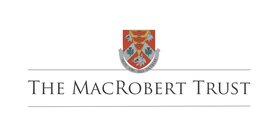Report Synopsis
From Beans to Bugs – Alternative Proteins to Drive Net Zero Egg Production
Globally, the agriculture sector is expected to reduce carbon emissions to help tackle the climate crisis. Soya in laying hen diets accounts for around 60% of the total carbon footprint (CFP) of an egg, so reducing or removing soya from diets will have a significant effect on reducing carbon emissions.
My Nuffield project reviewed alternative protein sources, including grain legumes, industry by-products, insect protein and single cell proteins, to determine the most suitable source of protein for helping to drive egg production towards net zero emissions.
Grain legumes, particularly faba beans, are of particular interest in the UK as a home-grown source of protein. Recent advancements in breeding are bringing varieties that are low in vicine and convincing to market, anti-nutritional compounds which have limited the use of faba bean in laying diets up until now due to effects on performance and mortality. Further investment is needed to breed varieties with increased yields of protein, disease resistance and early maturity to increase the area produced in the UK and Europe.
The use of industry by-products in laying diets is an important part of a circular economy. A key interest is the development of technology to further process DDGS from bioethanol production to increase the protein content. Processed animal proteins can provide a valuable source of protein and are used widely in the US. Regulation change in Europe has allowed it’s use since 2021, and the UK is expected to follow in 2025. One of the main problems with the use of by-products is their variability in nutritional value. Constant monitoring is required to correctly formulate diets to meet the nutritional requirements of laying hens.
The continued development of novel protein sources such as insect protein fed on low grade food waste, and single cell proteins grown on captured Co2 from industrial processes have great potential in providing protein sources with a negative carbon footprint, vital for offsetting unavoidable emissions on the road to net zero. Both sectors are working on scaling their technologies with insect protein expected to be economically viable for livestock feed within 5 to 8 years.
None of the protein sources studied are considered a complete replacement for soya. A combination of alternative protein sources is required to significantly reduce or replace soya completely, resulting in an increase in the cost of the diet. Support is required to cover the cost of using alternative proteins either through investment in finding solutions to reduce the cost of production of the alternatives, i.e plant breeding or scaling insect protein production, or increasing the price paid to egg producers, potentially through differentiated egg brands.
Alistair McBain
The MacRobert Trust

